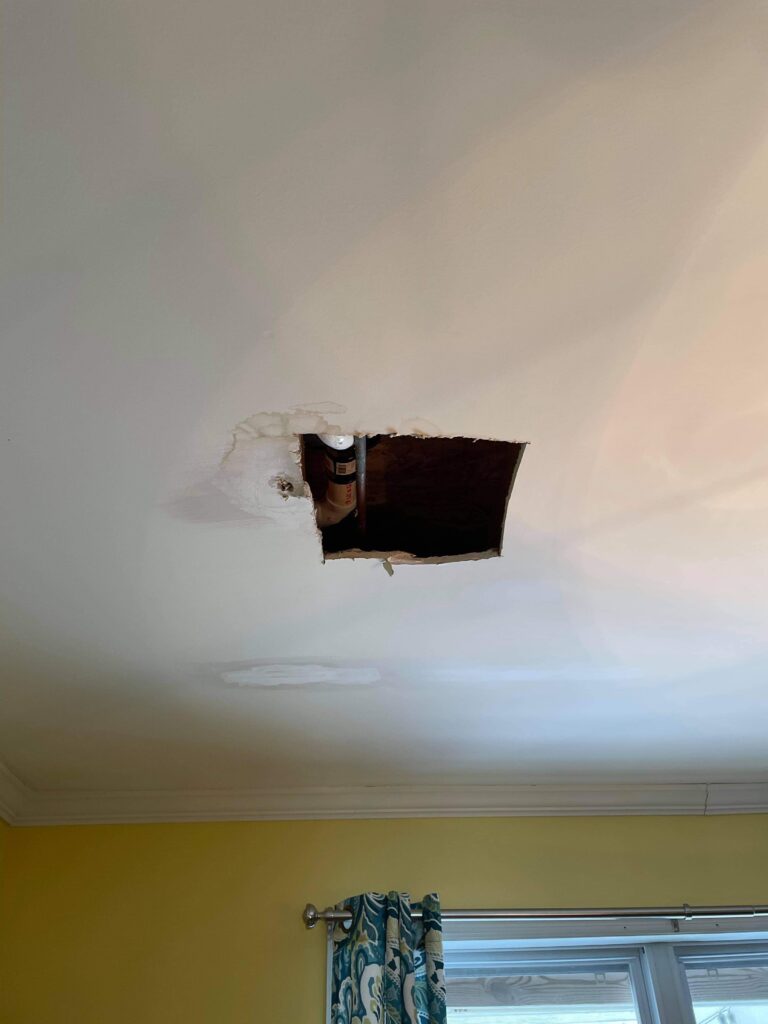How to Fix Drywall Cracks [Guide & Video]
Drywall cracks can be a common issue in homes, and knowing how to fix them properly is essential. In this guide, we will walk you through the process of fixing drywall cracks using a visual demonstration. The specific crack we will be addressing in this video is one that occurred around a fireplace due to a previous patch. By following these steps and using the recommended tools and materials, you can achieve professional-looking results.
Tools and Materials To Fix Drywall Cracks
To fix drywall cracks, you will need the following tools:
- 1 or 2-inch taping knife
- 4-inch taping knife
- 6-inch taping knife
- Utility/sheetrock knife
- Sanding block
The materials required for this project are:
- Easy Sand 20/45 (hardening compound)
- Plus3 joint compound (finishing compound)
- Fibafuse tape (or regular tape)
Step 1: Prepare the Crack
Begin by taking a utility knife and carving a V shape out of the crack. If you notice that the tape is loose, cut the tape where the crack ends and remove it. Additionally, remove any loose debris from the wall surrounding the crack. If there is no loose tape, you can proceed to the next step.
Step 2: Apply Easy Sand
Using a 4-inch taping knife, apply the mixed Easy Sand compound over the crack area. Easy Sand is a hardening compound, and its drying time depends on the specific product you have chosen. Follow the instructions on the label accordingly. Easy Sand 20 will harden within 20 minutes, while Easy Sand 45 will take 45 minutes to harden.
Step 3: Apply Tape or Fibafuse
Place the Fibafuse tape or regular tape over the crack or where the tape was previously located. Make sure to push out any excess mud from underneath the tape to ensure a flat bond with the surface. Clean off any surplus compound from the walls, as this will facilitate the coating process.
Step 4: Apply Easy Sand Again
After embedding the tape and completing the previous step, apply another layer of Easy Sand over the entire area. This will fill in any gaps and prepare the surface for the next step.
Step 5: Switch to Plus3
Once the previous layers of mud have fully hardened (typically within 24 hours), switch to a finishing compound called Plus3. This compound is easier to work with and sand. Use a 6-inch taping knife (or a larger one if needed) to apply the Plus3 over the area, covering all the joints. Feather the edges as shown in the video to ensure a smooth transition.
Step 6: Sanding the Surface
Once the compound has completely cured, proceed to the final step, which involves sanding. This step is relatively easy if you have followed all the previous steps correctly. Gently sand the patched area to blend it seamlessly with the surrounding drywall. Run your hand over the surface to check for any humps or bumps. If you detect any, perform additional sanding. If not, you can go over the area again with Plus3, making it slightly wider than before. This technique helps blend all the surfaces together, making the repair nearly invisible to the naked eye.
Conclusion
By following this step-by-step guide, you can successfully fix drywall cracks like a professional. Remember the golden rule of drywall finishing: “If you can feel it, you’ll see it when you paint.” Take the time to ensure a smooth and seamless finish by thoroughly inspecting the surface and performing additional sanding if necessary. With practice and attention to detail, you can achieve excellent results




